Have a look how “Design Thinking” works and all the ideas the Balinese school students came up with. A while ago I held my first “Design Thinking” workshop in Bali. “Design Thinking” is a specific method that has been developed to create product solutions. I went to a school in Bali and did the workshop with 14 students. The vision: Find an environmentally friendly alternative solution to plastic bags, something that has the potential to even out compete it! Not only was this workshop a pretty creative, fun and educational activity, but it also allowed me to conduct my research along a different way.
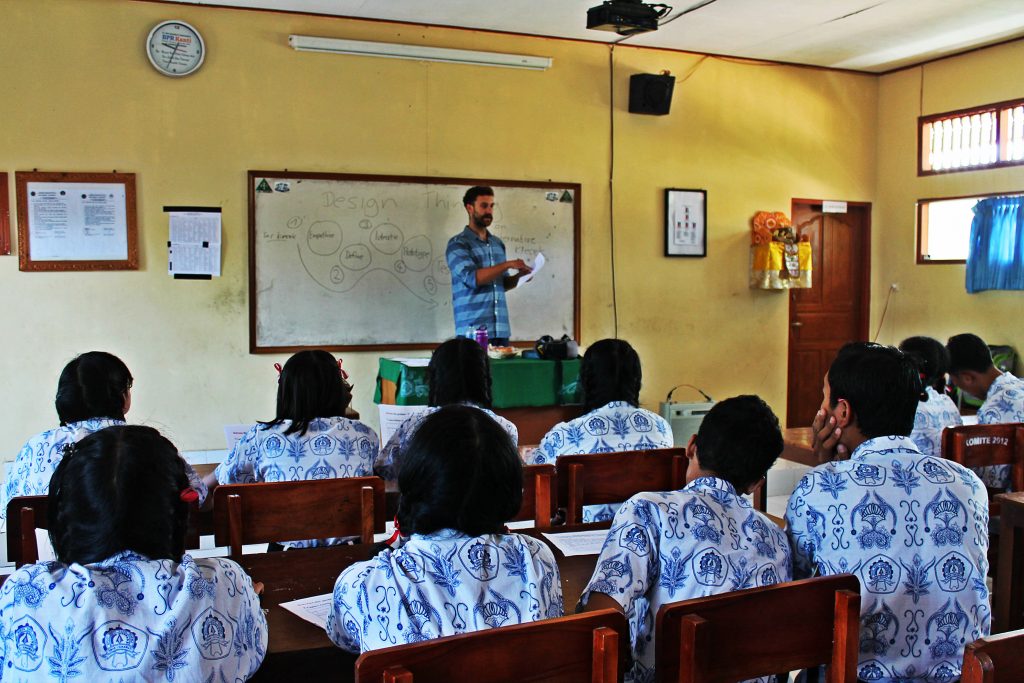
It’s been a pleasure and honor to work with these talented young Balinese
Besides the field experiment that I presented you in my previous post, this one here is more about qualitative research. Qualitative research is a lot about interviews and observations. Often the one who conducts the interview and observation strongly influences the information he or she retrieves. This is why it is very valuable to also gather information through different people. Adding another perspective always enriches your understanding.

The 5 steps of “Design Thinking”
Let me quickly explain you the 5 steps “Design Thinking” is based on:
- EMPATHIZE with the person you want to find a solution for. I sent the students outside so they could interview the shoppers in the street. They were supposed to open up and grasp all the qualities that make plastic bags so appealing and uncover what the alternative needs to have.
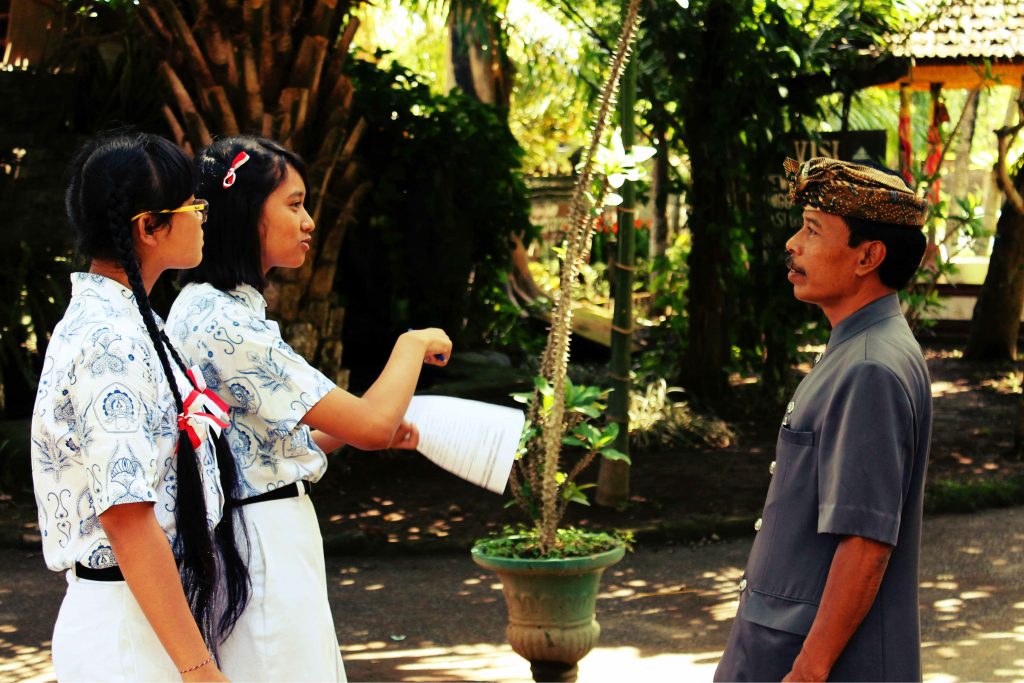
Empathizing to understand better
- DEFINE the core needs! After exploring different aspects what are the essential characteristic the product solution must have
- IDEATE! Think about alternatives; create ideas of how to get groceries from the store to home while producing less waste. Material, Form, Carrying techniques. Eventually sketch it.
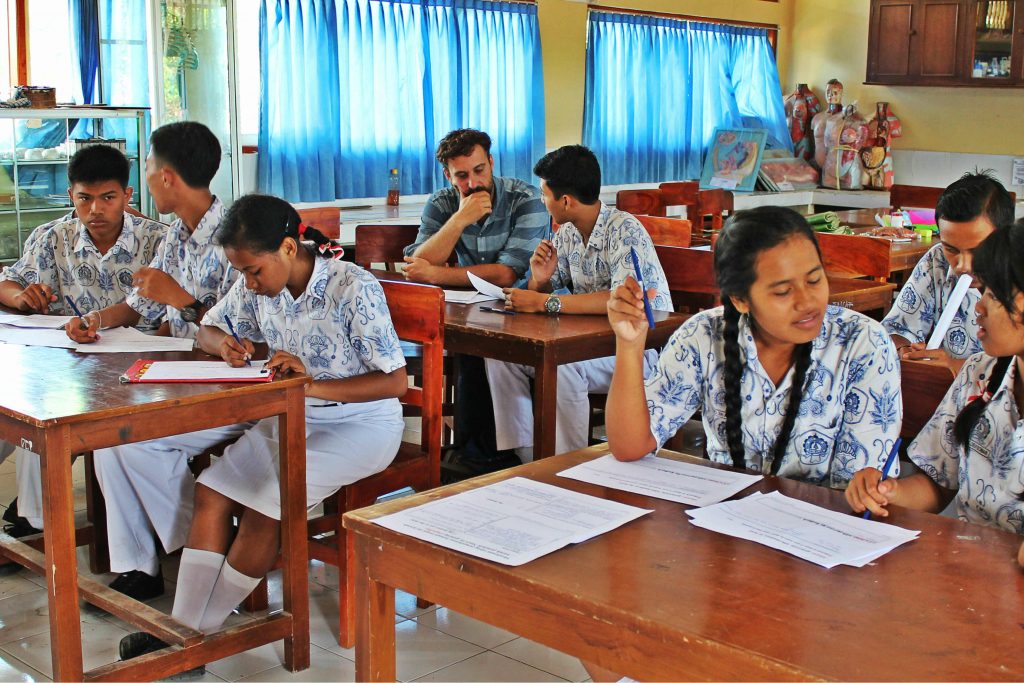
Having a better understanding of people and their needs, it’s now time to ideate
4. PROTOTYPE your idea. From my experience with “Design Thinking” workshops, it is the most rewarding moment when the ideas materialize.
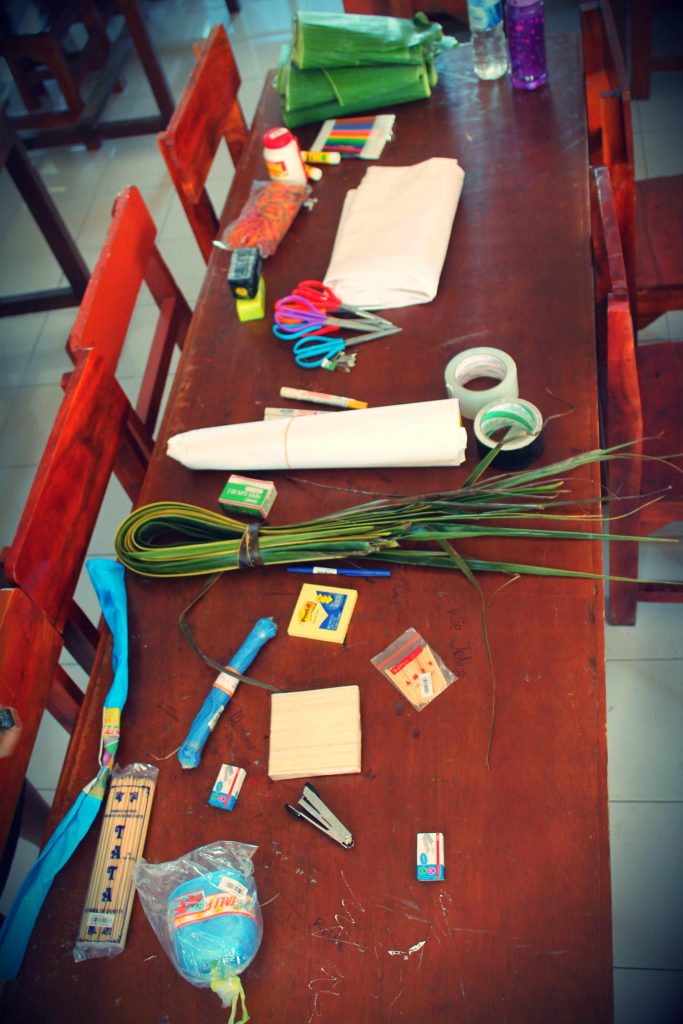
Tools for prototyping
… and go:
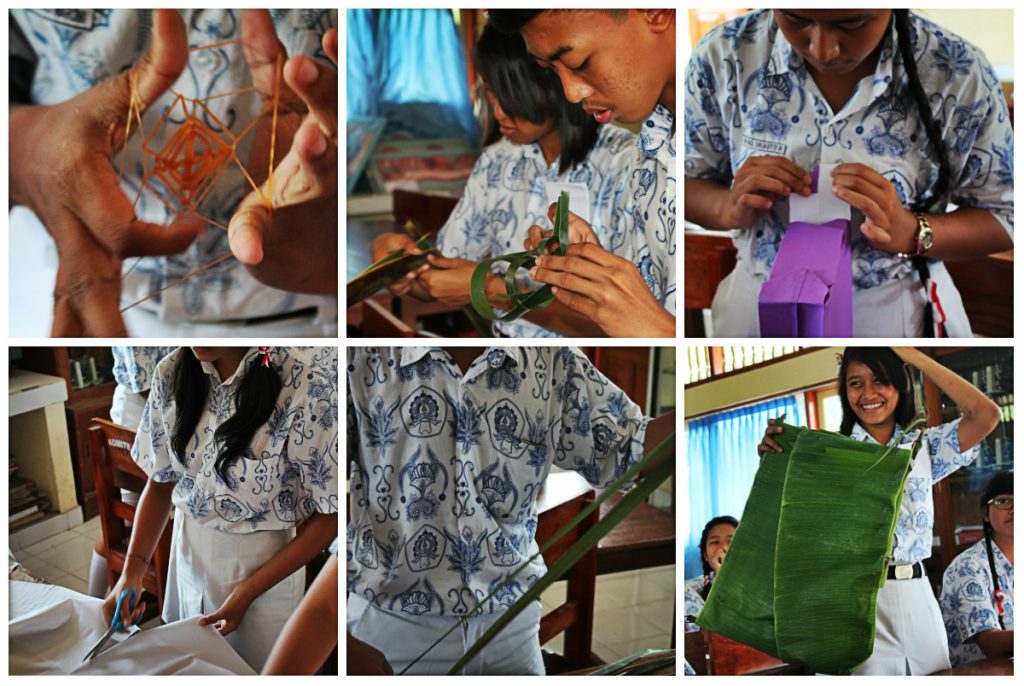
Amazing variety of great ideas for alternative bags
The students came up with many great bags. From an impressive big banana leaf bag to a tiny rubber-band bag that flexibly adapts to the size of your shopping goods… it was a lot of fun. See them and their eco-prototypes below:
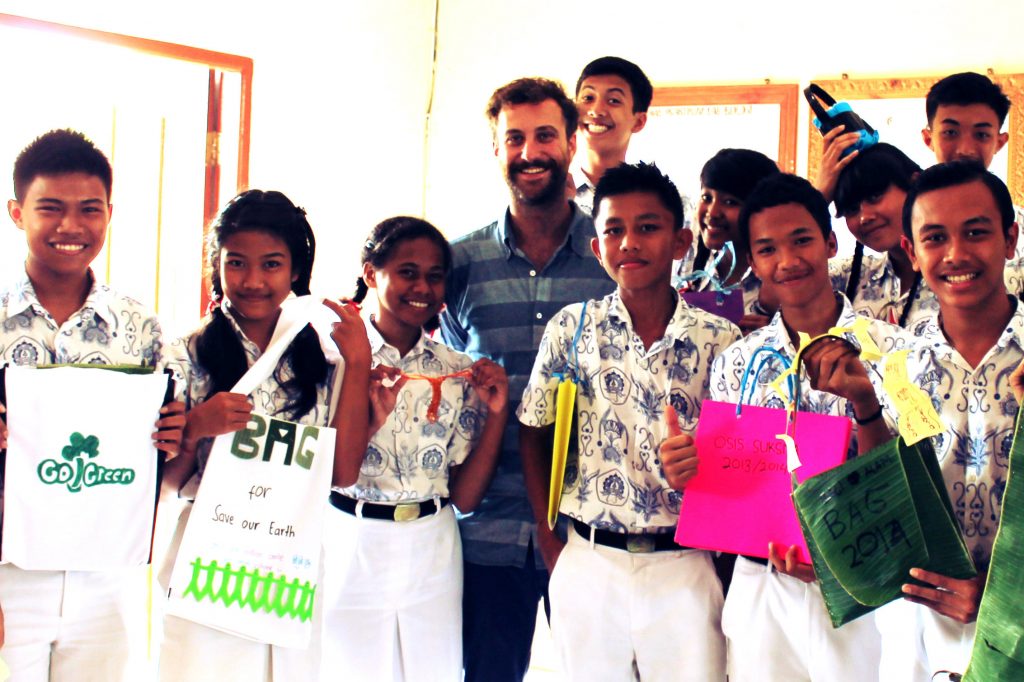
Let’s keep the smiles and using alternative bags 🙂
They are currently testing their prototypes. In the meantime I get to analyze the interviews they did with the shoppers,
the research goes on…
very nice initiative! organize a competition among villages or schools
Thank you Muriel. Yes competitions could be a great idea. It was really fascinating to see the variety and creativity of ideas once they started working with the materials. .